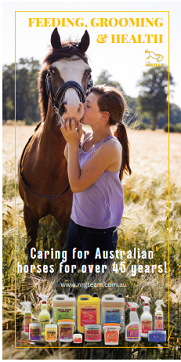Contracted Tendons, epiphysitis, cause & treatment
Each year we discuss the problems associated with fast growing, tall foals. This year we are either late in doing so or the foals are growing really fast. We are already seeing foals with the early signs. These conditions are those we call contracted tendons and epiphysitis. The two are closely related so we will discuss them as one.
The foals affected are usually taller than their herd mates. This is usually genetic with them being destined to be tall. The other foal can be an average size foal that is maturing very quickly due to a high protein feed intake. Either way, the conditions are brought on by rapid growth of the bone structure.
The long bones grow so fast the tendons have difficulty keeping up with them. As a result the tendons become tight like large cables connecting the coffin bone to the muscles high up on the leg. They are stretched so tight there is little give when the foal takes a step. This continues with the fetlock, pastern, and coffin joints losing their angle and becoming straight. If allowed to continue, the front legs will actually start breaking over at the fetlocks and soon the foal will be unable to straighten them. This is rapidly becoming a worse case scenario. The fetlock will become bruised and can lead to a joint infection.
We are often the first to draw attention to these conditions. We see the foal at periodic intervals, so it is easier for us to notice differences in its conformation and posture. For the owner it is much more difficult because they see the foal every day and any changes are so gradual they will escape notice. The first signs we see are the foal standing very straight in the front legs when viewed from the side. There is little angle in the fetlock, making the leg from the fetlock down looks almost straight.
We also look at the legs from in front of the horse. We look for swellings on the inside of the fetlock and knee joint. This is the previously mentioned epiphysitis. The. presence of epiphysitis is not really a problem itself, but is an indication of rapid growth of these joints. Both the rapid development of the bone structure and the trauma brought on by the leg being so straight leads to inflammation of the growth plate or epiphysis. As the leg becomes straight, there is less cushioning effect of the tendons. For the same reason a horse with straight pasterns will be rough riding. The joints are injured while the horse is young.
The foals most likely to have the above condition are those that are taller then their herd mates. The best candidates are those with thoroughbred in their family tree. The other tall breeds, such as the Tennessee Walker, Standardbred, Saddlebred, etc., are susceptible as well. But it can show up in any breed where the foal is fed heavily with a high protein ration. These are often foals being conditioned for halter classes. It can also be a problem for the foal with a very heavy milking mother!
So what do you do if you suspect your foal is developing these conditions? First confirm there is a problem. We will be glad to evaluate the foal. If the situation is developing, simply reducing the feed intake will often help. This may include reducing the concentrate for a heavy milking mare, so that her milk production will drop. In some cases weaning may be required. If the leg is so straight it is starting to buckle at the fetlock, a drastic reduction of intake is needed. This may end any hopes of haltering the foal but will help prevent serious problems later on. This is also when some additional medication may be needed. This includes -anti-inflammatories and possibly vitamin treatment. Corrective trimming may be of help to lower the heel.




































